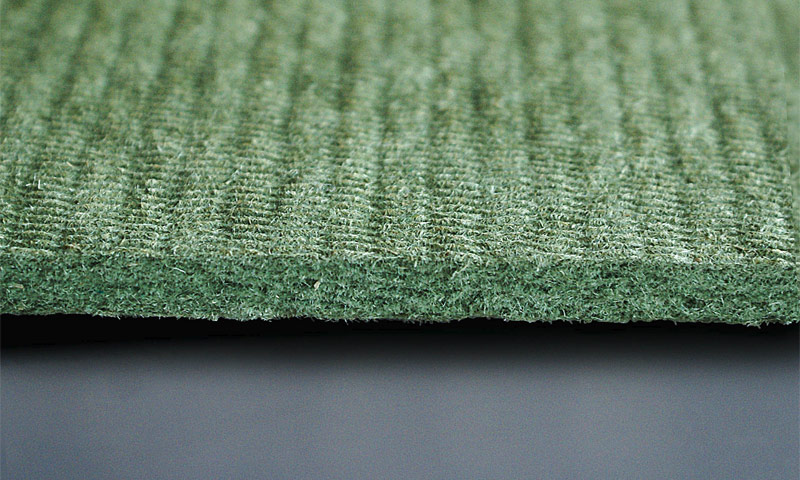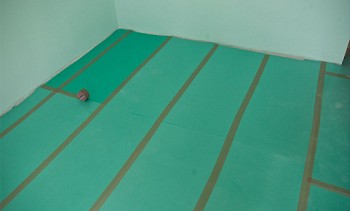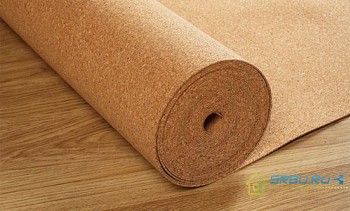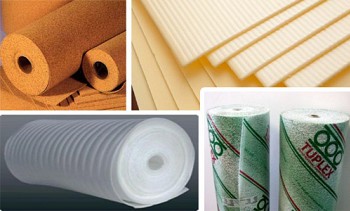Which substrate to choose for the laminate - manufacturers recommendations
If you are going to change or repair the floor, you need to think about the substrate. In any case, that's exactly what the manufacturers of laminated coatings say with one voice. And in order to make it easier for you to decide which substrate to choose for the laminate, we have collected all the information and recommendations of manufacturers of parquet boards and laminate in this material. Who, if not them, needs to know which material is more suitable for the perfect service of their products, and also (which is very important) to maintain the guarantee.
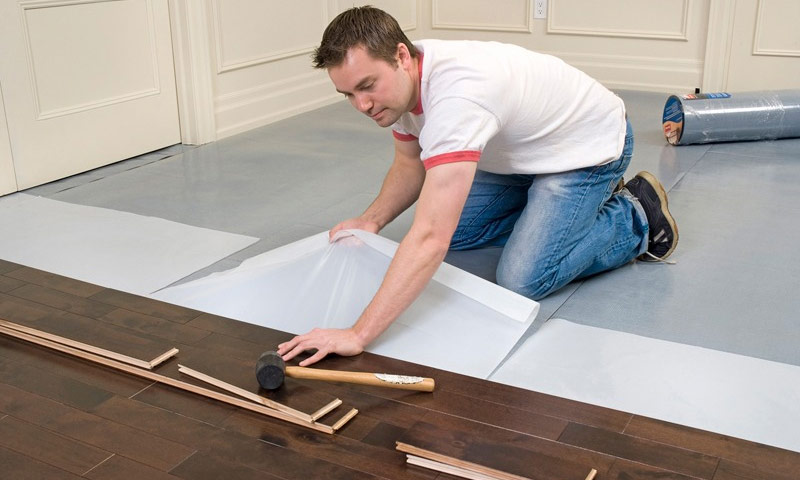
Content:
On the benefits of the substrate and its necessity for the laminate and parquet board
Any manufacturer of parquet or laminate will immediately answer the question about the substrate, that without it it is better not to lay the floor covering. After all, it is a damper, so necessary when operating the floor. In parallel, she is assigned several more tasks: to insulate the floor, protect it from moisture, level out small defects of its base. And yet it is the damping function that is dominant. Let us examine in more detail what it is.
The word "damper" comes from the German language. The verb "dämpfen" is translated as "drown out", respectively, "Dämpfer" is a muffler (shock absorber) designed to dampen vibrations that occur during the operation of any systems or mechanisms. In the case of a laminated coating, such mechanisms are locking joints. The substrate damps vibrations caused by human steps on the floor, thereby extending the life of the locks.
In addition, sound vibrations (extraneous noise) are also damped, which are divided into two types: transmitted noise and reflected noise.
- Passing noise refers to those sounds that pass into the apartment of the lower neighbors.
- Reflected noise - these are sounds when walking on the floor, heard in your own apartment.

1. Laminate; 2. The substrate; 3. Vapor barrier; 4. Screed; 5. Waterproofing; 6. Concrete slab.
What requirements should be considered when choosing and laying the substrate for the laminate and parquet board
Companies producing parquet and laminate flooring reserve the right to reject any claims of buyers who used the “wrong” backing. That is, one that has not been tested in this company. And only by purchasing a proprietary substrate, it can be expected that the manufacturer will respond to a complaint about the quality of the laminate. The exceptions are the Portuguese cork backing and extruded polystyrene foam - to them manufacturers of laminated coatings are sympathetic.
And now a couple of words about how thick to choose a substrate for the laminate. The buyer of a laminate flooring or parquet board who has used a substrate thicker than 3 mm can then bitterly regret it. After all, if subsequently the flooring quickly fails, claims are not accepted. You cannot combine substrates of different types. The reason is the same (operating rules are not followed).
Ability to level surface
As already mentioned, the substrate serves as a damper. This means that it can even the uneven base slightly. In some cases, manufacturers set themselves the goal of combating bumps by releasing special substrates for this. Moreover, if you do not want to lose the guarantee for a laminate or parquet, you can only level the floor using a proprietary substrate.
As already mentioned, the warranty will also be lost if you want to use a thicker than expected substrate (more than 3 mm) for a greater leveling effect.You can not put it in two or three layers, as well as combine. For all this, the manufacturer punishes with the deprivation of the guarantee for his goods.
Ability to protect against moisture
Often in advertisements for substrate manufacturers, you can see or hear that their products offer excellent waterproofing properties. However, laminate manufacturers, apparently, do not really trust this. They require, without fail, that the concrete base be covered with a plastic film (not thinner than 200 microns). The sanction for non-compliance with this condition is still the same - the deprivation of the guarantee. Therefore, it is worth considering not only which substrate to choose for the laminate, but also how to properly lay it.
Experienced master builders in some cases advise to refrain from laying the film. They claim that mold and fungus quickly start under it. This is indeed possible, but only when the concrete has not dried up enough after building the house and the flooring is already being laid. And to check if the concrete base is dry is very simple. You need to take a piece of film meter per meter, and then put it on concrete, leaving it overnight. Glue it around the entire perimeter with tape so that moisture does not come out. If in the morning the film from the inside remains dry, then the concrete has dried out. You can safely put both a film and a substrate - there will be no mold with fungus.
Many companies that produce floor coverings use their own methods to protect their substrates from moisture. However, this does not cancel the rules for laying a plastic film. Only the manufacturer himself can allow the use of a proprietary substrate without additional waterproofing.
Ability to keep warm
Most substrates have a structure that promotes low thermal conductivity. Therefore, they keep the heat well, but nothing more. Naturally, they cannot serve as floor heaters. Usually, in apartment buildings, the apartment next to the neighbors is heated from below, so it is not necessary to be protected by a heater. And thinking about which substrate to choose for a parquet board or a laminated coating, it is far from first to think about its thermal insulation abilities.
Features of various substrates that must be considered when choosing
Foam polyethylene backing
This is the most budget option. Rather, such material can be called wrapping, since its density is 25 kilograms per cubic meter (for comparison: cork density is 220 kilograms per cubic meter). A polyethylene backing is suitable for a cheap laminate of class 21 - both materials do not last long. After 2 - 3 years, the plastic product wears out, and there is no sense in it. However, the 21st class of laminate is no longer produced, so this substrate is used when the object needs to be built quickly and inexpensively, and the quality requirements are minimized.
If you ask manufacturers of floor coverings, they will say that with limited means it is better to take ordinary cardboard for the substrate. It will be more durable than polyethylene. However, in a couple of years, the damping qualities will disappear in both the cardboard and polyethylene substrates. And the locks as a result quickly deteriorate. As for the warranty on the floor, it will probably be lost - in any case, with most brands.
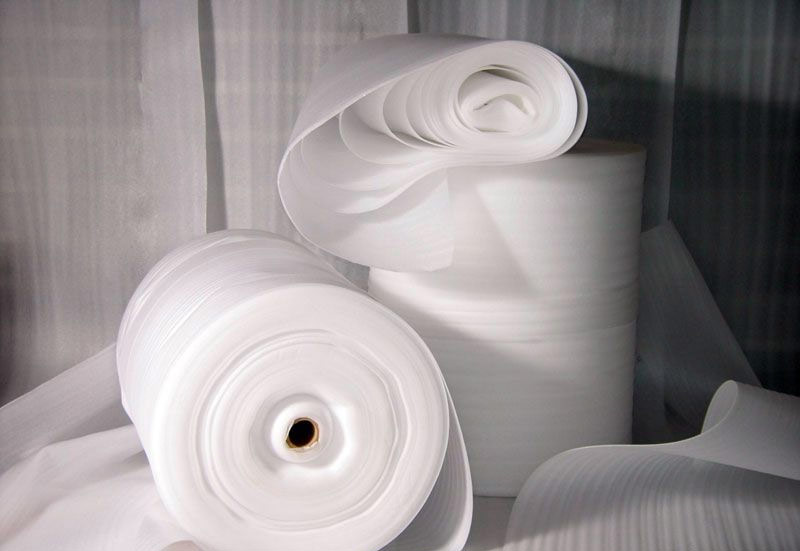
Extruded polystyrene backing
Basically, manufacturers of laminate, products from this material are welcome. If you need a not very expensive, but quite high-quality substrate, then EPSP is exactly what you need. It will be possible to significantly muffle both passing and reflected noises, and at the same time even the floor base. The only condition is that bumps should not be more than 1.5 - 2 millimeters. And another thing: such a substrate should not be thicker than 3 mm - excessive thickness makes it too soft.
If you put too thick a substrate, the floor will acquire an artificial bump that adversely affects the locks.By virtue of their design, they withstand only horizontal loads. And when the surface will spring, bending under the steps, the lock joints will quickly become loose. Ugly cracks will appear, and the laminate will creak and sometimes even rumble when walking on it.
Buying a substrate of expanded polystyrene for a slight leveling of the floor, the result can be obtained not bad. But if this product is not branded, then it has not been tested by the manufacturer of the applied flooring. And he quite reasonably can refuse if he is presented with a complaint about damaged locks. After all, many enterprises make substrates of EPSP: European, Russian, Chinese. And far from always claimed parameters correspond to reality. So the claims should be presented to the one who released such a low-quality substrate.
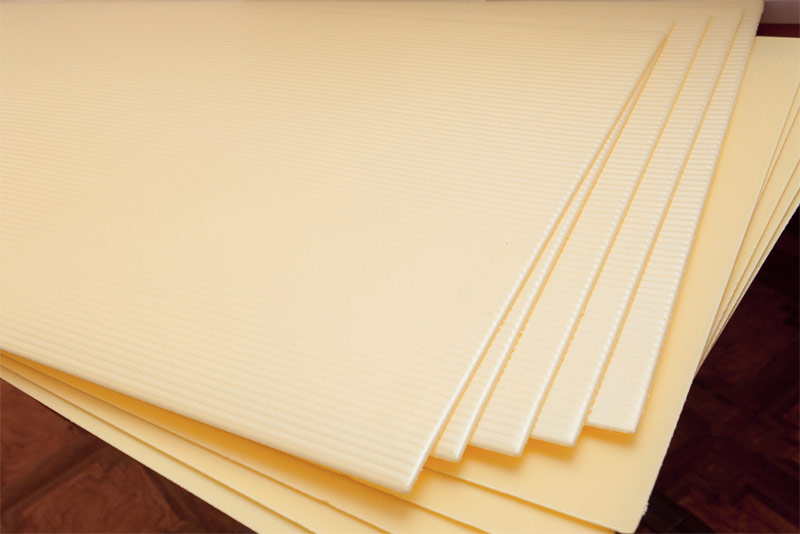
Therefore, when buying products from extruded polystyrene foam, you should prefer reliable brands - for example, Isopoline or VTM. They have been used for a long time and successfully, absorbing noise, keeping heat and leveling the floor even better than cork. Unfortunately, the EPSF substrate is gradually crumpled, and its damping characteristics deteriorate significantly, and then completely disappear. When two to three years pass, all of the above characteristics can no longer be compared with the characteristics of the cork. And after six to ten years of operation, the parameters of the substrate become completely uncompetitive.
And one more big minus EPSP is worth noting. This material is combustible, and when burned it emits dangerous toxins. Surely many remember how in 2009 a fire at the Lame Horse club claimed many lives. If there were no polystyrene foam interior trim, the consequences would not be so sad. Instantly spreading fire and toxic gases - a terrible force.
Cork backing
Any laminate manufacturer will say that cork is the best backing layer - after all, it does not deform at all. Recall how quickly a cork is pulled out of a bottle of aged wine. And she was squeezed by the neck for decades. So is the cork substrate - if it is slightly compressed over the years of use, then no more than one or two percent. And her density is excellent, due to which the castle joints do not loosen and wear out. As for the small roughnesses of the base, then they are eliminated with the help of a flexible cork.
A heat insulator made of this material is also good - we give one more example from everyday life. If you put a bottle cap under the handle of the pan lid, you can not be afraid of burns. Many housewives use this trick. However, it is worth mentioning the lack of cork substrate - poor ability to align. Therefore, where floor irregularities exceed 2 mm by 2 m, it is not recommended to use it without preliminary surface treatment. And as a leveling material, it is not at all suitable. Recall that to maintain the manufacturer’s warranty, the thickness of the cork substrate should be no more than 3 mm. There are exceptions, but for this you need to have official permission from the manufacturer.
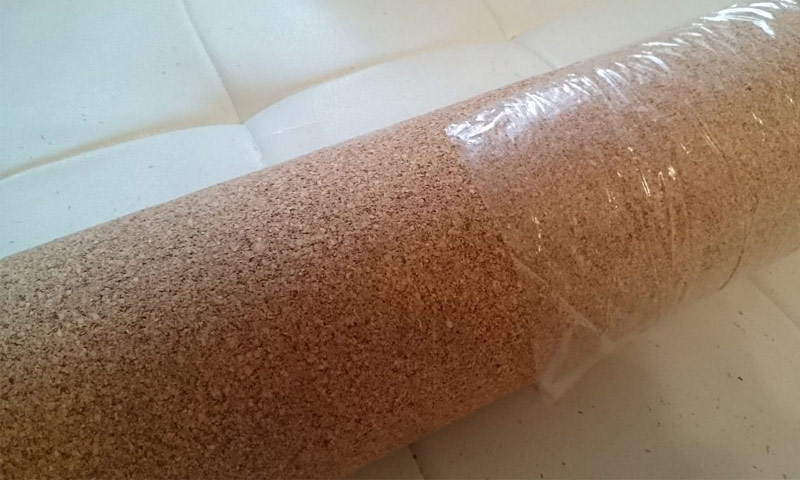
Note that everything mentioned above applies only to the Portuguese cork backing - it is the manufacturers of parquet board and laminate that respect it most. However, there is also a Chinese cork backing, about which you can often hear negative reviews. And it is inconvenient to lay it, and during operation it does not behave in the best way. They say that even flooring can ruin it. One plus - this material is very cheap. But manufacturers of flooring and laminate usually have an unflattering opinion about the Chinese substrate.
Naturally - the Portuguese, after all, make their substrate from natural cork wood, which grows in this country. And the Chinese have to look for other options, cheaper. After all, transporting high-quality cork crumbs is expensive, and even it will cost a pretty penny.
Tuplex backing
This is the notion of Finns - a three-millimeter substrate consists of three layers.The two outer layers are polyethylene, and the inner is polystyrene granules. Thanks to this design, the substrate is able to remove excess moisture from the concrete base. So the fungus or mold will not have a chance. In addition, the technical parameters of this product are very good.
But here everything rests on the invariable requirement of manufacturers of floor coverings - covering the concrete base with a film 200 microns thick. This film can not be used only in one case - when a branded substrate with a waterproof coating is purchased. So it turns out that Tuplex cannot adequately prove itself. But this material is expensive, so many people prefer to use not it, but extruded polystyrene foam. Indeed, according to other characteristics, it is no worse than Duplex.
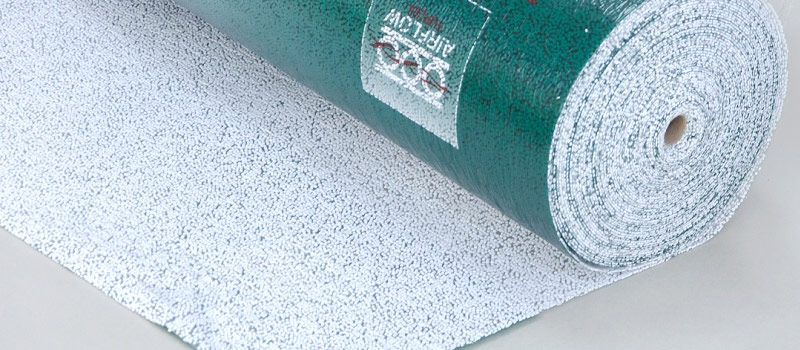
Substrate Parkolag
A similar principle is used as in the previous substrate, but the performance and composition are slightly different - not polyethylene is used here, but paper impregnated with bitumen. A layer of crumb from cork pieces is applied on top. This material is Russian, sold in the form of rolls, turned inside out. When rolling, the substrate must be turned over, which is not very convenient, in addition, cork crumbles and crumbles, and paper sometimes breaks. A 200 micron thick plastic film will also have to be laid down - otherwise the manufacturer will void the warranty.
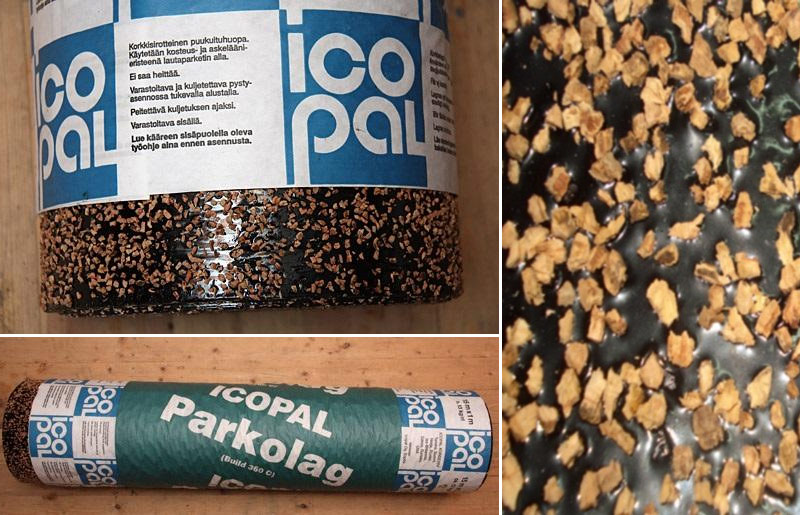
Isoplate backing
Softwood is used to make this substrate. It turns out quite high-quality material. However, the manufacturer slightly embellishes the capabilities of its substrate. Nevertheless, she can not compete with cork products in terms of elasticity and ability to restore shape. For example, a substrate of a centimeter-thick cork can easily be rolled into a roll, but with Isoplat (even 2 times thinner) this can not be done. However, this does not prevent the pressed coniferous wood substrate from being quite worthy of consumer attention.
But Isoplat is produced with a minimum thickness of 5 mm, so there’s no need to talk about the manufacturer’s guarantee for a parquet board or laminate (we remember the maximum allowable thickness of 3 mm).
Now you know how to choose a substrate for the laminate. Having familiarized yourself with the most popular products, you can decide for yourself which one is best. The main two points are the evenness of the foundation and the amount that you are willing to spend on repairs.
